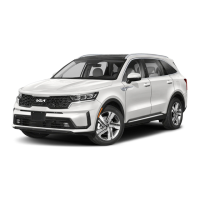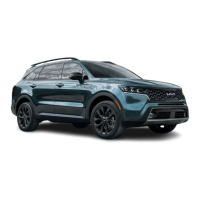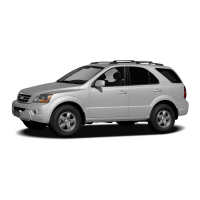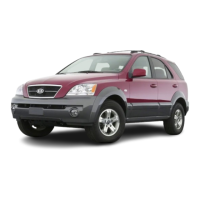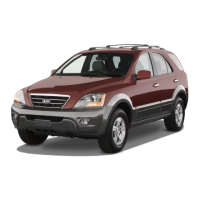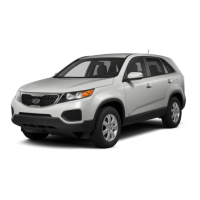195
4
4
Features of your vehicle Exterior features
䳜 When the roof rack is not being
used to carry cargo, the crossbars
may need to be repositioned if
wind noise is detected.
䳜 When carrying cargo on the roof
rack, take the necessary precau
-
tions to make sure the cargo does
not damage the roof of the vehi
-
cle.
䳜 When carrying large objects on
the roof rack, make sure they do
not exceed the overall roof length
or width.
䳜 When you are carrying cargo on
the roof rack, do not operate the
sunroof. (if equipped)
䳜 The following specification is the
maximum weight that can be
loaded onto the roof rack. Distrib
-
ute the load as evenly as possible
across the crossbars (if equipped)
and roof rack and secure the load
firmly.
Loading cargo or luggage in
excess of the specified weight
limit on the roof rack may dam
-
age your vehicle.
䳜 The vehicle centre of gravity will
be higher when items are loaded
onto the roof rack. Avoid sudden
starts, braking, sharp turns,
abrupt manoeuvres or high
speeds that may result in loss of
vehicle control or rollover result
-
ing in an accident.
䳜 Always drive slowly and turn cor
-
ners carefully when carrying
items on the roof rack. Severe
wind updrafts, caused by passing
vehicles or natural causes, can
cause sudden upward pressure on
items loaded on the roof rack.
This is especially true when car
-
rying large, flat items such as
wood panels or mattresses. This
could cause the items to fall off
the roof rack and cause damage
to your vehicle or others around
you.
䳜 To prevent damage or loss of
cargo whilst driving, check fre
-
quently before or whilst driving to
make sure the items on the roof
rack are securely fastened.
ROOF RACK
100 kg (220 lbs.)
EVENLY DISTRIBUTED

